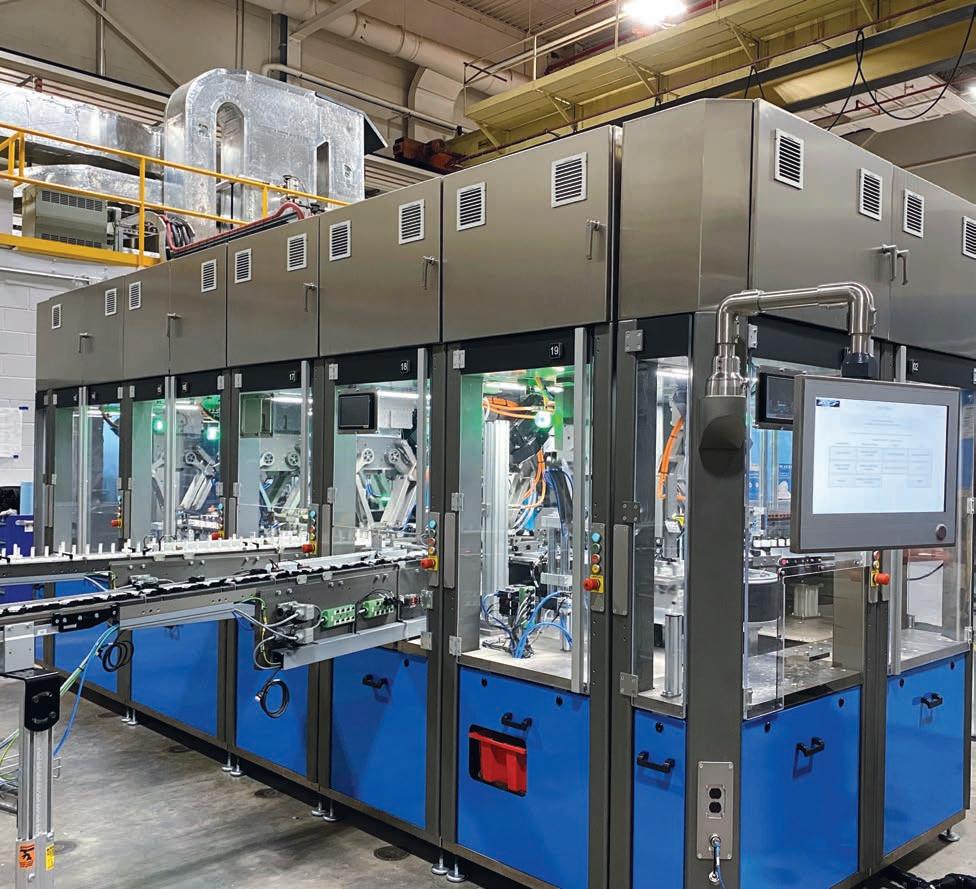POWER TRANSMISSION
FEATURE
MAXIMIZING LINEAR MOTION ACCURACY AND DURABILITY
Informed round shaft selection is key in linear ball bearing applications. BY CHARLES ISAAC When selecting a linear ball bearing for an application, motion designers often choose round rails over square rails to reduce costs in lowstress applications or when requiring a high tolerance for misalignment. Whether these designers achieve the intended benefit, however, depends on how carefully they select from among the many available round rail shafting options. Round rails will, for example, vary in physical form factors such as hardness,
straightness, surface finish, roundness and cylindricity. They also come in multiple grades of steel as well as aluminum, each of which might be coated with other materials. While many designers may be tempted to use a less expensive shaft with inferior characteristics, the modest initial savings often result in a net loss, based on data showing decreased life of the overall assembly. Therefore, a basic understanding of key round shaft factors and how they influence precision and durability will help in
20 DESIGN ENGINEERING November/December 2020
selecting the ideal shaft for a design.
Physical Form Factors
Key shaft features that interact with one another to impact precision and durability include hardness, straightness, surface finish, roundness and cylindricity. Shaft hardness affects the dynamic load rating of the bearing. Harder shaft surfaces better resist permanent deformation under single-point loading of bearing balls, thus maximizing the life of both the linear bearing and the rail itself. A common
process for hardening linear shafts is “case hardening,” in which the manufacturer adds a hard, wear-resistant outer layer by heat treating the shaft, while keeping the core “soft”. Figure 1 shows how the bearing load correction factor and consequently, life expectancy, must be adjusted downward as hardness drops below 60 HRC. The depth of the case hardness is another factor in determining overall life. Higher loads subject the shaft to deeper bearing ball penetration and higher stress concentration. High deformation resistance in these situations then requires deep and uniform case hardness and must be engineered to linear ball bushing bearing size and load expectations. Straightness is perhaps the most vital parameter for positioning accuracy in a linear ball bushing bearing system. Lack of straightness can cause binding, noise generation, premature wear and failure of the ball bearings. Best-in-class linear shafts are straight to within 0.001 DESIGN-ENGINEERING.com






